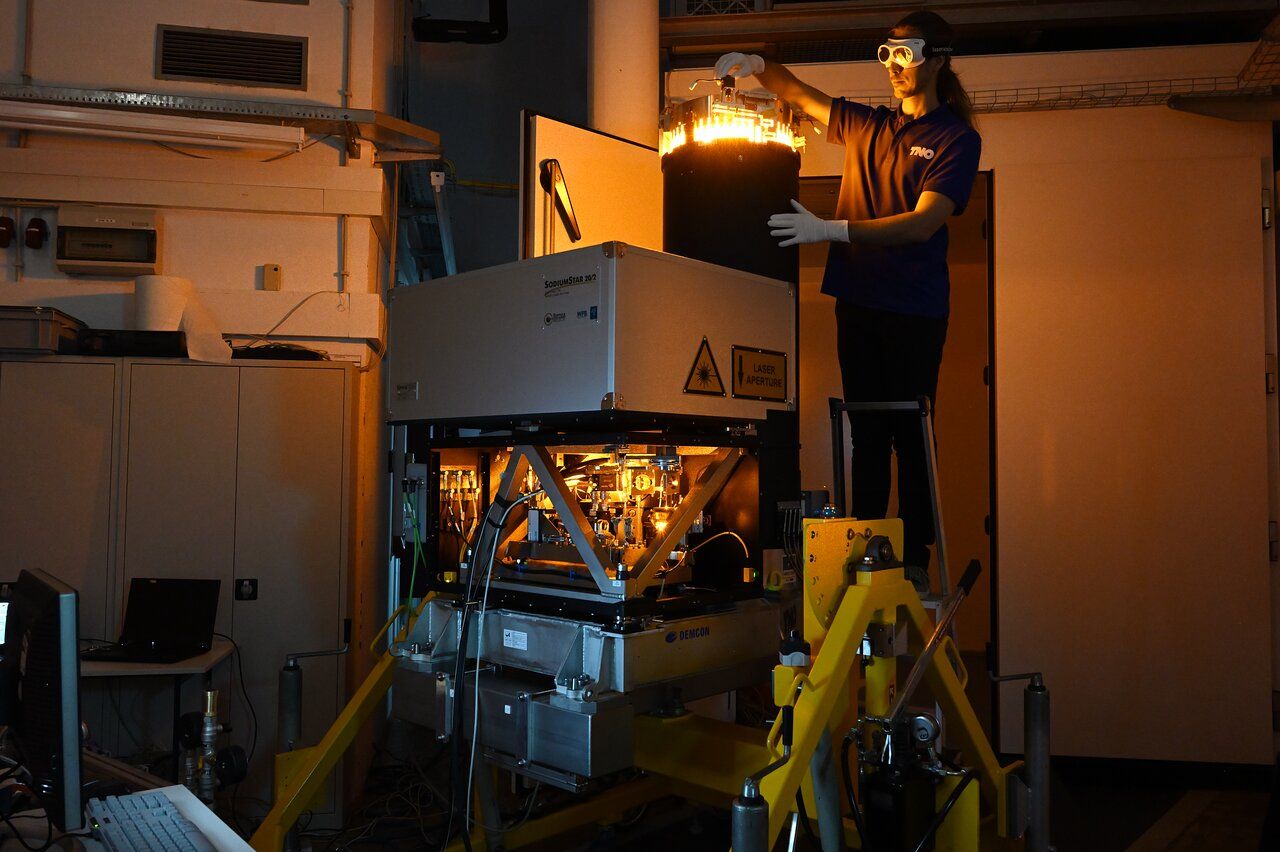Lasers are part of the telescopes’ adaptive optics system. As ESO’s observatories are ground-based, the turbulence in the atmosphere can blur our view of the cosmos, and with adaptive optics we can cancel this blurring out, in real time. The laser creates an artificial star by exciting sodium atoms in the atmosphere, around 90 kilometers high. A computer measures how the atmosphere distorts the light of this star and steers a shape-shifting mirror in the telescope to compensate for it. The result: sharper images.
The light itself is generated in the laser source — the large grey box at the top. It then enters the laser projection system, which consists of different stages. First, the illuminated area under the laser source performs diagnostics and corrections on the beam. Then, the black chimney-like tube expands the beam to a diameter of 30 cm and directs it into the sky. This tube contains a mirror that is used to point the laser to where the astronomers need it. Each beam delivers 22 watts of power, enough to generate a bright artificial star that can be used for adaptive optics.
The laser projection systems are being built in the Netherlands by TNO and Demcon focal, and the first one has now successfully passed a review by ESO engineers. Three of these lasers are part of the GRAVITY+ upgrade to ESO’s Very Large Telescope Interferometer (VLTI). The remaining six lasers will be installed on ESO’s Extremely Large Telescope (ELT), currently under construction not far from the VLTI.

Credit photo: European Southern Observatory/TNO/Demcon/Fred Kamphues

